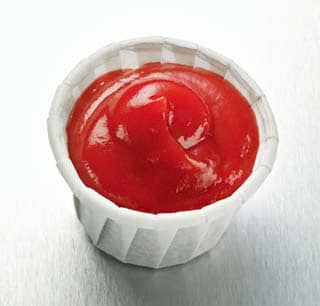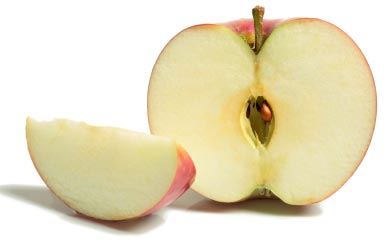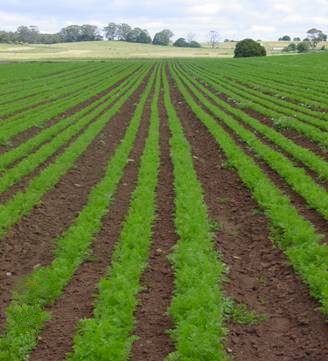Hello again everyone! Welcome back to a new week of blogging and recipes here at Out of the Culinary! It was a long and beautiful weekend across much of the Midwest – if you would have told Maggie and me that we would be able to go to a park in October and be wearing SHORTS we would never have believed you. Yet – there we were, 85 degrees and sunny in October. It was a true delight!
Now – on to matters concerning food! It’s funny how the culinary news cycle falls into themes. We read multiple news sites and confer from many different sources for our news each week – but the sites all seem to fall into a trend, or theme, even though they are separate entities. Last week, the theme was food safety – this week, it’s all about food taxation and restrictions. Confused? We’ll try to clear things up below:
If you’re a fan of buttering your bread – and you live in Denmark, you likely noticed a little more pain to the pocketbook at the start of this month. As of October 1st, the average price of a half pound of butter saw a 35% increase due to new taxation. The tax – accurately labeled the ‘fat tax’ was levied by the Denmark government as a form of healthy eating incentive. The tax targets fats found in animal products – most commonly butter and cream. In addition, any food product that contains over 2.3% of saturated fat is seeing a $3 hike per kilo due to the tax. The Denmark government is hoping to reduce cardiovascular disease and other heart related problems by discouraging the purchase of these fat based products. Does it work? Well, in 2004 Denmark became the first government to ban trans-fats in foods. Since that time, Denmark has seen a 30% reduction in cardiovascular disease. You can read the full story HERE.
These issues are always heavily contested. Farmers and conservatives tend to cry foul – they claim that the taxes unfairly burden farm production and lower profitability, making it harder for local production to stay sustainable. Conservatives cry ‘big government’ intervention and declare that these decisions need to be made by the consumer and not the government. Without turning this into a political debate – you can’t argue with the results. Typically foods that are high in saturated fats are cheaper because of the ease of mass producing these items and the low cost of production. Lower income individuals typically choose these items over healthy alternatives simply due to the increased buying power of their dollar when they buy low quality foods. While banning or over taxing ‘junk’ foods may not be the best alternative – some foods such as cheese (which are full of saturated fats but contain a lot of beneficial elements as well) are taxed heavily and are unfair victims to these regulations. From a national health standpoint, the results show that the policy is effective. The Denmark government has set their focus on protecting the health of their country, and as of late, this policy seems to be working.
The French government announced last week that ketchup would no longer be allowed in local schools. The move, much like Denmark’s ‘fat tax’ is aimed solely for health purposes. French Fries will be the only food exempt from the ban – and they are only served once per week. (So, it’s not a true ban of sorts, simply a restriction).
Jamie Oliver, a personal favorite of the blog, has championed this idea for a few years now. Healthy eating starts when you’re young and studies have proven that cooking and serving healthy meals to school children greatly impacts the overall health of a country (or even region) as they grow older. It establishes healthy eating habits and curbs early health problems that many overweight American children are experiencing. This aggressive move would never fly in this country – but the sodium rich ketchup ban is a move that should be applauded by the ‘eat healthy’ supporters as a step in the right direction. It will be interesting to follow this story and see how the parents react / if the health benefits begin to appear. Read more about the ‘ban’ HERE.
Schools and governments feel the need to make these aggressive moves because (sadly) some parents fail to give their children the proper direction when it comes to eating choices. A recent study found that fast food marketing has a great impact on children. A study tested showing commercials for French fries or apple slices in between cartoon shows. After the shows concluded, the children were given a choice between apple slices or French fries. The children who saw the fry ads chose the French fries 71% of the time. 54% of the children chose apple slices if they saw the apple slice commercial. While that isn’t too surprising (we know that marketing, especially to children is very effective) the true ‘ah-ha’ moment of the study came when the children’s parents became involved. The percentage of children who chose French fries after seeing the fry ad dropped to 55% when their parent’s encouraged the kids to make a healthy decision. The percentage of children who chose apples after seeing the apple ad increased to 67% when encouraged by their parents to make a healthy choice. This study enforces the concept that regulation and marketing can only impact children’s decisions to a point. The greatest influence a child can have on healthy eating choices comes from active participation and encouragement from home. You can read more on this study HERE.
It’s common knowledge that organically grown products provide a greater health benefit than their non-organic counterparts. While the exact percentages of these benefits are still hotly contested, both sides agree that there are some added benefits to eating organic when compared to the alternative. Now, new studies are showing that organic produce has another added benefit that was, at first, not noticed.
It turns out that produce grown organically actually produces a higher yield than the non-organic counterparts. When compared to an equally sized non-organic plot, the average yield of organic produce was close to 30% higher when conditions were poor. In equal conditions, organic and non-organic yields were nearly equal. This debunks the largest organic myth – organic farming would not keep up with world demand. Organic farming cannot be shoehorned into conventional farming practices; however, as smaller organic plots had better yields than the more ‘standard size’ organic farm plots. This would force a change in field layouts and farming practices – not a difficult transition, but change is always a hard thing to get past those who are used to doing things a certain way.
In addition, organic farming is much more sustainable than non-organic. Organic farms use 45% less unsustainable energy than a non-organic farm and produce about 40% less greenhouse gas emissions when compared to a conventional farm.
Organic detractors argue that organic farming is more expensive for farmers thereby reducing profit margins and making it harder for farmers to make a profit. That fact is false as well. Organic farms save a considerable amount of money on fertilizer and other chemicals. While they do have a higher manual labor cost, the savings on other chemicals more than offset this increased labor cost. In fact, organic farms have been found to be twice as profitable as a conventional farm. You may be wondering, if it’s cheaper for farmers to grow organic, why is organic food so much more expensive than non-organic? Simple supply and demand! There are a lot more non-organic farms (thereby more non-organic produce) than organic farms. The demand for organic is higher than non-organic thereby driving up the price. As more farms shift to organic, the price of their produce will become more competitive. You can read more about these organic farming discoveries HERE.
Finally, a not-so-healthy related story: A few weeks ago, we shared fall bourbons and whiskeys that are great to enjoy on a cool day. Today, we’ve got a list of cocktails for you to utilize these great bourbons. Check out the fall inspired list HERE.
That’s all the news to fit blog about this week! We’ve got a full week of cooking lined up for you as well. I’m taking to the kitchen for an epic recipe tomorrow night (when I have the day off, I tend to get ambitious…) and Maggie will take to the kitchen for a very unique recipe on Wednesday night. After both of our recipes left us wanting more last week, we decided to come out firing and be aggressive this week. It’s sure to be interesting! Stop in tomorrow night to see what I’ve got cooking. Until then,
~Cheers






No comments:
Post a Comment